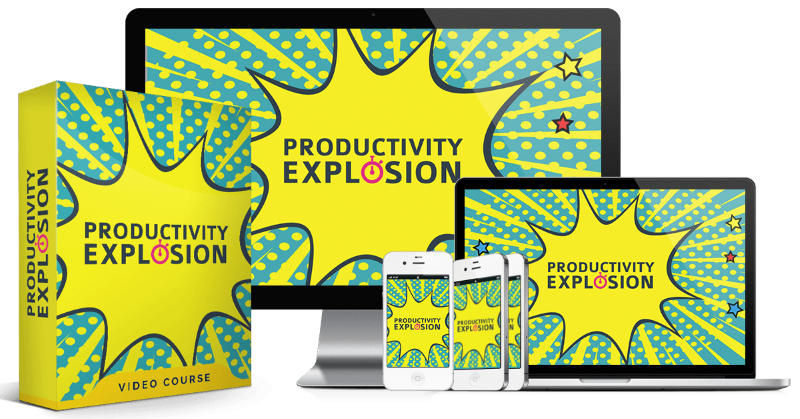
The Power of Determination: Unleashing the Human Spirit
Determination is a powerful human trait that fuels the relentless pursuit of goals and dreams.
It is the driving force that propels individuals to overcome obstacles, defy odds, and achieve what seems impossible.
Determination is the grit and tenacity that makes us hold on when letting go seems the easier option.
It is the inner strength that pushes us to keep moving forward, even when the path ahead is steep and treacherous.
This article explores the power of determination through three inspiring real-life stories.
Thomas Edison: The Inventor’s Resolve
Thomas Edison, one of the world’s most prolific inventors, is a shining example of determination.
His journey to inventing the practical electric light bulb was fraught with challenges and failures.
Edison made thousands of unsuccessful attempts before he could finally create a working model.
When asked about his numerous failures, Edison famously said, “I have not failed. I’ve just found 10,000 ways that won’t work.”
His unwavering determination and perseverance eventually led to the invention that illuminated the world.
Edison’s story is a testament to the fact that determination can turn failures into stepping stones for success.
Bethany Hamilton: The Unstoppable Surfer
Bethany Hamilton’s story is another powerful illustration of determination. At the age of 13, Hamilton, a promising professional surfer, lost her left arm in a shark attack.
Despite the traumatic incident and the physical disadvantage, Hamilton was determined to return to surfing.
Just one month after the attack, she was back on her surfboard.
With unwavering determination and relentless practice, she relearned how to surf with one arm and went on to win national and international surfing competitions.
Hamilton’s story is a powerful reminder that determination can help us overcome even the most daunting challenges and achieve our dreams.
J.K. Rowling: The Magic of Perseverance
J.K. Rowling, the author of the globally beloved Harry Potter series, is another inspiring example of determination.
Before she tasted success, Rowling faced numerous rejections and hardships.
She was a single mother living on welfare when she started writing the Harry Potter series. After completing her manuscript, she was rejected by 12 publishing houses.
However, Rowling’s determination remained unshaken. She continued to believe in her story and did not give up.
Her perseverance paid off when Bloomsbury, a small British publishing house, agreed to publish her book.
Today, Rowling’s Harry Potter series has sold over 500 million copies worldwide, and she is one of the most successful authors of all time.
Her journey underscores the power of determination in turning dreams into reality.
Determination is a potent trait that can empower individuals to overcome obstacles, defy odds, and achieve their goals.
The stories of Thomas Edison, Bethany Hamilton, and J.K. Rowling serve as powerful reminders of the incredible feats that can be achieved through determination.
They inspire us to stay determined, persevere in the face of challenges, and relentlessly pursue our dreams.
After all, as the saying goes, “The difference between the impossible and the possible lies in a person’s determination.”
The Power of Self-Confidence: Unleashing the Potential Within
Self-confidence is a fundamental human trait that empowers individuals to face challenges, take risks, and achieve their goals.
It is the belief in one’s abilities and the conviction to carry out tasks successfully.
Self-confidence is not just about feeling good about oneself; it’s about having the courage to step out of comfort zones, make decisions, and take action.
This article explores the power of self-confidence through three inspiring real-life stories.
Muhammad Ali: The Confident Champion
Muhammad Ali, one of the greatest boxers of all time, is a shining example of self-confidence. Ali was known for his unshakeable belief in his abilities.
He would often proclaim, “I am the greatest!” even before he had proven himself in the ring.
His self-confidence was not mere bravado; it was a deep-seated belief in his skills and potential.
This confidence fueled his performance, enabling him to win numerous titles and become a global icon.
Ali’s story is a testament to the fact that self-confidence can empower individuals to achieve greatness.
Oprah Winfrey: The Media Mogul’s Self-Belief
Oprah Winfrey’s journey from a poverty-stricken childhood to becoming a media mogul is a powerful illustration of self-confidence.
Winfrey faced numerous challenges and adversities in her early life, including poverty, abuse, and discrimination.
However, she believed in her abilities and her potential to create a better life for herself.
Her self-confidence propelled her to pursue a career in media, where she broke barriers and became one of the most influential women in the world.
Winfrey’s story is a powerful reminder that self-confidence can help individuals overcome adversities and achieve their dreams.
Elon Musk: The Visionary’s Conviction
Elon Musk, the CEO of SpaceX and Tesla, is another inspiring example of self-confidence.
Musk has embarked on ventures that many deemed impossible, such as revolutionizing the automotive industry with electric cars and aiming to colonize Mars.
Despite skepticism and criticism, Musk has remained confident in his vision and abilities.
His self-confidence has enabled him to take risks, face challenges, and achieve groundbreaking successes.
Musk’s journey underscores the power of self-confidence in driving innovation and progress.
Self-confidence is a potent trait that can empower individuals to face challenges, take risks, and achieve their goals.
The stories of Muhammad Ali, Oprah Winfrey, and Elon Musk serve as powerful reminders of the incredible feats that can be achieved through self-confidence.
They inspire us to believe in our abilities, have the courage to take action, and relentlessly pursue our dreams.
After all, as Henry Ford once said, “Whether you think you can, or you think you can’t – you’re right.” Confidence in oneself is the first step towards success.
The Power of Creativity: Unleashing the Human Imagination
Creativity is a fundamental human trait that fuels innovation, solves problems, and drives progress.
It is the ability to think outside the box, to connect disparate ideas, and to create something new and valuable.
Creativity is not confined to the realms of art and literature; it permeates every aspect of life, from science and technology to business and social change.
This article explores the power of creativity through three inspiring real-life stories.
Steve Jobs: The Visionary Innovator
Steve Jobs, co-founder of Apple Inc., is a shining example of creativity.
Jobs was not just a technologist; he was a visionary who reimagined how technology could be integrated into our daily lives.
His creativity led to the invention of revolutionary products like the iPhone, iPad, and iPod.
These devices not only transformed the tech industry but also changed the way we communicate, work, and entertain ourselves.
Jobs’ story is a testament to the fact that creativity can disrupt industries and change the world.
George Lucas: The Master Storyteller
George Lucas, the creator of the Star Wars franchise, is another powerful illustration of creativity.
Lucas’s imagination gave birth to an entire galaxy far, far away, complete with its unique characters, intricate plots, and a language of its own.
His creative storytelling captivated millions of viewers worldwide, making Star Wars one of the most successful film franchises of all time.
Lucas’s story is a powerful reminder that creativity can create enchanting experiences and touch the hearts of people around the world.
James Dyson: The Inventive Problem-Solver
James Dyson, the founder of Dyson Ltd., is an inspiring example of creativity in the realm of design and technology.
Dyson’s creativity lies in his ability to see problems as opportunities for innovation.
Frustrated with the diminishing performance of his vacuum cleaner, Dyson set out to design a bagless alternative.
After 5,127 prototypes and numerous rejections, he finally invented the Dual Cyclone bagless vacuum cleaner, which became a best-seller.
Dyson’s journey underscores the power of creativity in solving problems and creating value.
Creativity is a potent trait that can empower individuals to innovate, solve problems, and drive progress.
The stories of Steve Jobs, George Lucas, and James Dyson serve as powerful reminders of the incredible feats that can be achieved through creativity.
They inspire us to think outside the box, connect disparate ideas, and create something new and valuable.
After all, as Albert Einstein once said, “Creativity is intelligence having fun.” Let’s unleash our creativity and make our world a better place.
The Power of Unconventional Thinking: Breaking the Mold
Unconventional thinking is a human trait that encourages breaking away from established norms and traditional frameworks.
It is the ability to view problems from a unique perspective, to challenge the status quo, and to innovate.
Unconventional thinking is not about being different for the sake of being different; it’s about finding novel and effective solutions to problems.
This article explores the power of unconventional thinking through three inspiring real-life stories.
Richard Branson: The Maverick Entrepreneur
Richard Branson, the founder of the Virgin Group, is a shining example of unconventional thinking.
Branson, who has dyslexia, dropped out of school at the age of 16 to start a youth-culture magazine called “Student.”
Despite having no formal business education, Branson went on to create Virgin Records and then expanded the Virgin brand into various other sectors, including airlines, telecommunications, and space travel.
His willingness to take risks and his unconventional approach to business have been key to his success.
Branson’s story is a testament to the fact that unconventional thinking can lead to extraordinary achievements.
Temple Grandin: The Innovative Scientist
Temple Grandin, a renowned animal scientist, is another powerful illustration of unconventional thinking.
Grandin, who is on the autism spectrum, has a unique ability to understand and relate to animals.
She used this ability to revolutionize the livestock industry by designing more humane handling systems.
Her innovative designs, which were initially met with skepticism, are now used worldwide and have significantly improved the welfare of farm animals.
Grandin’s story is a powerful reminder that unconventional thinking can lead to groundbreaking innovations and positive change.
Satoshi Nakamoto: The Cryptocurrency Visionary
Satoshi Nakamoto, the pseudonymous person or group of people who developed Bitcoin, is an inspiring example of unconventional thinking.
Nakamoto envisioned a decentralized digital currency that operates without a central authority, a concept that was unheard of at the time.
Despite skepticism and criticism, Bitcoin has grown exponentially and has paved the way for numerous other cryptocurrencies.
Nakamoto’s unconventional thinking has not only disrupted the financial industry but also sparked a global conversation about the future of money and finance.
In conclusion, unconventional thinking is a potent trait that can empower individuals to challenge the status quo, innovate, and drive progress.
The stories of Richard Branson, Temple Grandin, and Satoshi Nakamoto serve as powerful reminders of the incredible feats that can be achieved through unconventional thinking.
They inspire us to view problems from unique perspectives, to challenge established norms, and to find novel and effective solutions.
After all, as the saying goes, “The person who follows the crowd will usually go no further than the crowd. The person who walks alone is likely to find himself in places no one has ever seen before.”
Let’s embrace unconventional thinking and explore the uncharted territories of possibilities.
The Power of Pattern Recognition: Decoding the World Around Us
Pattern recognition is a fundamental human trait that allows us to understand and navigate the world around us.
It is the ability to discern order in a chaotic environment, to identify trends in a sea of information, and to predict future outcomes based on past occurrences.
Pattern recognition is not just about seeing patterns; it’s about making sense of them and using them to make informed decisions.
This article explores the power of pattern recognition through three inspiring real-life stories.
Isaac Newton: The Observant Scientist
Sir Isaac Newton, one of the most influential scientists of all time, is a shining example of pattern recognition.
Newton’s observation of an apple falling from a tree led him to discern a pattern – that all objects fall straight down.
This observation, combined with his knowledge of the moon’s motion, led him to formulate the law of universal gravitation.
Newton’s ability to discern patterns in natural phenomena revolutionized our understanding of the physical world.
His story is a testament to the fact that pattern recognition can lead to groundbreaking discoveries.
Florence Nightingale: The Insightful Nurse
Florence Nightingale, the founder of modern nursing, is another powerful illustration of pattern recognition.
During the Crimean War, Nightingale noticed a pattern in the mortality rates of soldiers.
She observed that more soldiers were dying from diseases like typhus and cholera than from their wounds.
Nightingale used this insight to advocate for better hygiene practices in hospitals, significantly reducing the mortality rate.
Her ability to discern patterns in health data laid the foundation for evidence-based medicine and modern nursing.
Nate Silver: The Predictive Analyst
Nate Silver, a renowned statistician and writer, is an inspiring example of pattern recognition in the realm of data analysis and prediction.
Silver gained fame for his accurate predictions of the 2008 and 2012 U.S. presidential elections.
He achieved this by discerning patterns in polling data and using them to create a predictive model.
Silver’s ability to recognize and interpret patterns in complex data sets has revolutionized the field of predictive analytics.
Pattern recognition is a potent trait that can empower individuals to understand the world, make informed decisions, and drive progress.
The stories of Isaac Newton, Florence Nightingale, and Nate Silver serve as powerful reminders of the incredible feats that can be achieved through pattern recognition.
They inspire us to observe our environment, discern patterns, and use our insights to make a positive impact.
After all, as the saying goes, “The future is already here – it’s just not evenly distributed.”
By recognizing patterns, we can better anticipate the future and shape it to our advantage.

















